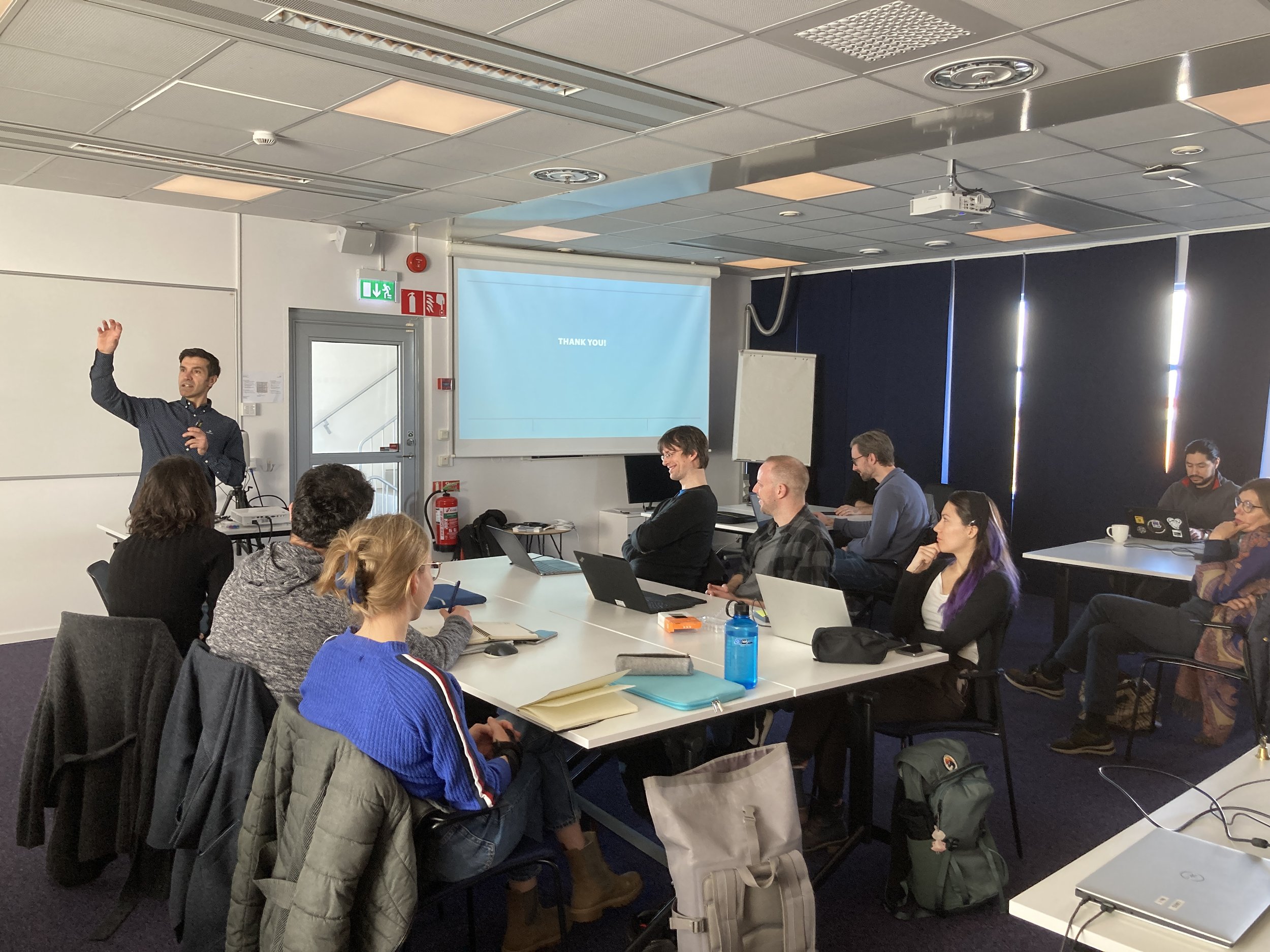The Northern Lights on Food Hackathon builds crucial knowledge on data analysis
Stephen Hall, senior lecturer at Solid Mechanics at Lund University, and former LINXS Director.
LINXS has organised Image Analysis hackathons since 2017. The aim is to build capacity within 3D data analysis and image quantification through interactive workshops. The most recent hackathon, in March, gathered almost 30 researchers and data analysts over the course of two days. – As experiments at MAX IV, and soon ESS, increase in numbers, we are going to get more and more 3D and 4D data that we need to handle, says Stephen Hall, senior lecturer at Solid Mechanics at Lund University, former Imaging theme leader.
Data analysis is a bottle neck
He explains that data analysis is currently the bottle neck for progress on many research experiments. Researchers tend to generate huge volumes of imaging data that is then just left unanalysed, as there is not enough time or knowledge to analyse the data.
– Now, we are at a stage where you can produce these nice images with X-ray imaging, but we still have far to go when it comes to quantifying what we are seeing. We have to train people to understand what you can get out of the data, and show them ways to make the work flow more efficient.
Build competence base for the future
The hackathons are an effort to plug this knowledge gap and help researchers in a hands-on, interactive way, to process their data. Many of the participants are early career researchers and it is particularly important to train them now to build the competence base for the future.
The most recent hackathon, organised within the Northern Lights on Food theme, had a focus on machine learning in connection to food science applications, since these tools offer many possibilities to speed up data analysis, and detect phases or layers in different foods (and other materials including packaging material, teeth and the gut).
– We had a session on how and when to use machine learning. For the images of teeth, for example, it worked very well to separate out the different components, but for a packaging material example it was less suitable successful in the challenge to separate and label each individual fibre in the material.
The interactive nature of hackathons is important
What makes the hackathons special is that they are very interactive in nature. The whole idea is that the participants get to discuss their already acquired data with data specialists. Many participants return to the hackathon sessions multiple times, or send other researchers from their group to attend.
– It is great to see people coming back to further build their knowledge. Throughout the years, we have also had many researchers contacting us too about their continuing analysis and data quantification plus the publications made possible due to the hackathon support. This is great to hear.
Such feedback and the interactions at the events are part of what makes Stephen Hall and his colleagues Anders Bjorholm Dahl, at DTU, and Jon Sporring, at Copenhagen University, excited to continue to organise the hackathons.
– Our main motivation to keep going is that the hackathons respond to a real need in terms of data analysis. Apart from that, they are fantastic events. The interaction is great, as is the mix of different people, with scientists and data experts. Each time, we as lecturers/experts come away with something different, and with lots of new input to bring over into the next session.
The LINXS hackathons are organised in collaboration with the Center for Quantification of Imaging Data from MAX IV (QIM) a collaboration between Denmark (DTU and UCPH) and Sweden (LU and MAXIV).
Participants at Northern Lights on Food hackathon in March.


